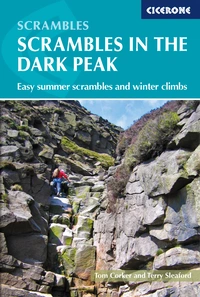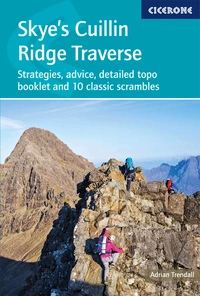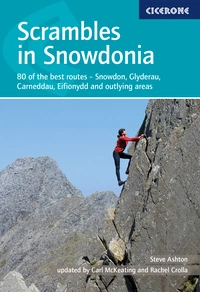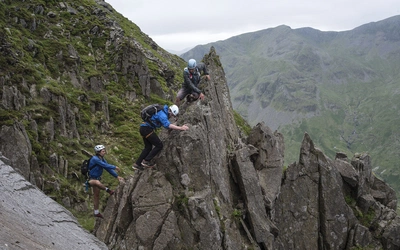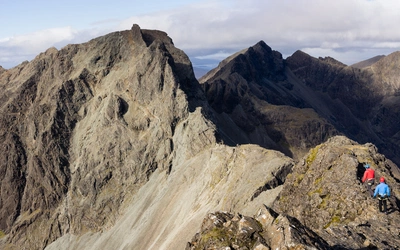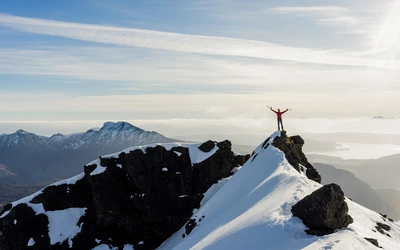What is gill scrambling?
Gill scrambling is something of an acquired taste that some find hideous and others consider to be the very best scrambling. Gill scrambling demands self-imposed rules for maximum enjoyment. John Fleetwood
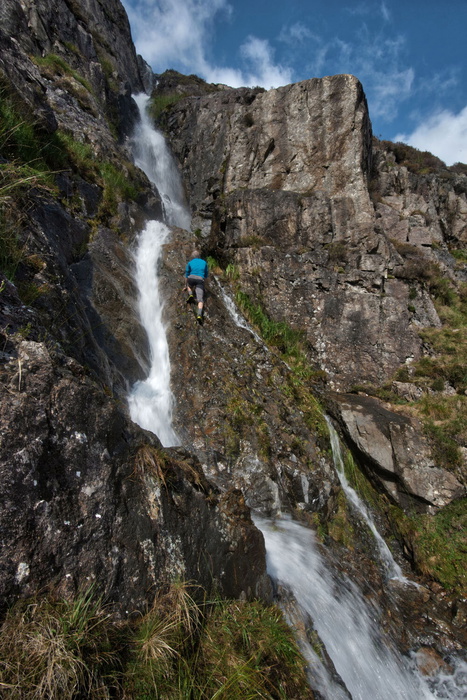
Gills are the relics of the original forest vegetation and are fragments that show what the original landscape would have been before the interference of man. It is very evocative to climb up a gill and get an impression of what the original landscape would have been like.
The term ‘gill’ is Scandinavian in origin and is generally associated with the Lake District and especially with the Borrowdale volcanic series, where streams exploit its weaknesses. A gill can be a relatively open small stream but usually refers to one with very steep sides and a rocky bed.
The alternative spelling of ‘ghyll’ was coined by the Victorians and is poetic in origin. Its use correlated with the Victorians’ increasing interest in and romanticism of the landscape as they took trips to admire the waterfalls within the gills.
Why go gill scrambling?
Gill scrambling is something of an acquired taste that some find hideous and others consider to be the very best scrambling. It is the very antithesis of modern rock climbing – vegetated, slippy and often poorly protected.
Yet gills are deeply beautiful with an energy created by the rushing water. There are very few poor gill scrambles, in contrast with crag scrambles, where scrappy routes abound.
Harry Griffin, a pioneer of gill scrambling, sums it up nicely: 'Perhaps you could regard gill climbing as harking back to the old days before guide books, when people did their own exploring in out-of-the-way places. Entering a gill you have never seen at close quarters is deliciously uncertain.'
The rules of gill scrambling
Gill scrambling demands self-imposed rules for maximum enjoyment. Basically, rule one is to take the hardest route and the one closest to the water, straying from the streambed only when the direct way is impassable.
Rule two is to stick to the rock as much as possible, only wading – or in extreme cases, swimming – when progress by climbing is impossible. This often means performing difficult rock moves a few centimetres above a pool, or struggling to ascend a difficulty when it would be much easier to walk round.
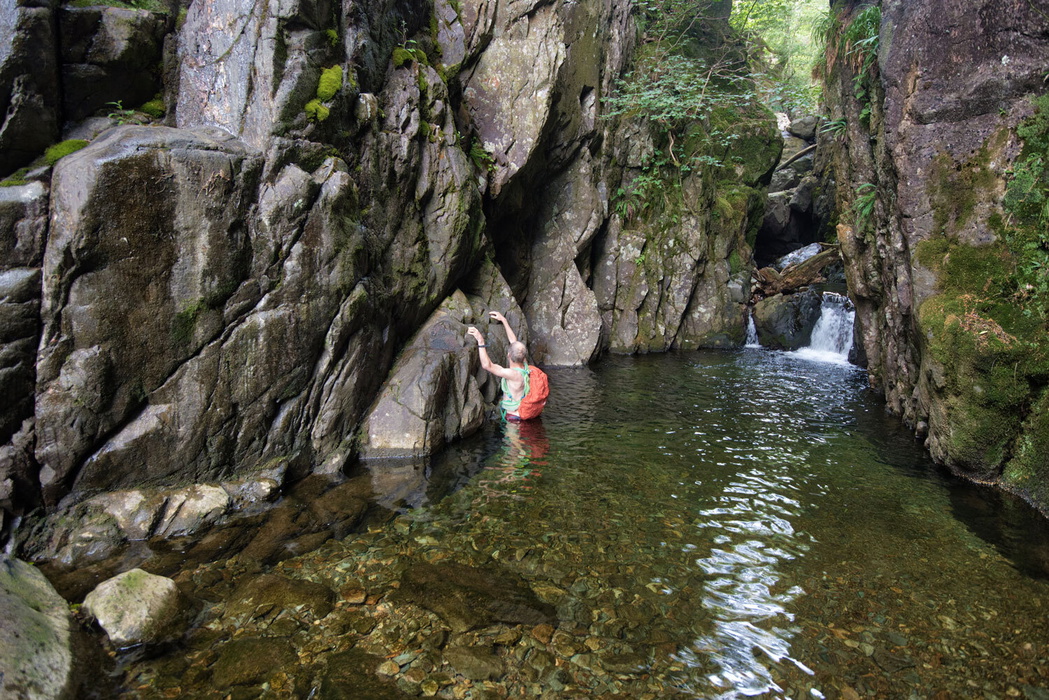
Choosing a gill scramble
The most serious gill scrambles (some would say the only ones worth doing) lie in ravines, which are common in the Lake District. Having sampled the delights of the clean, water-washed rock, more open streams are not to be dismissed. Gills that cascade over broad belts of rock give entertaining scrambling with a choice of route and opportunity to make the ascent as difficult or as easy as you wish.
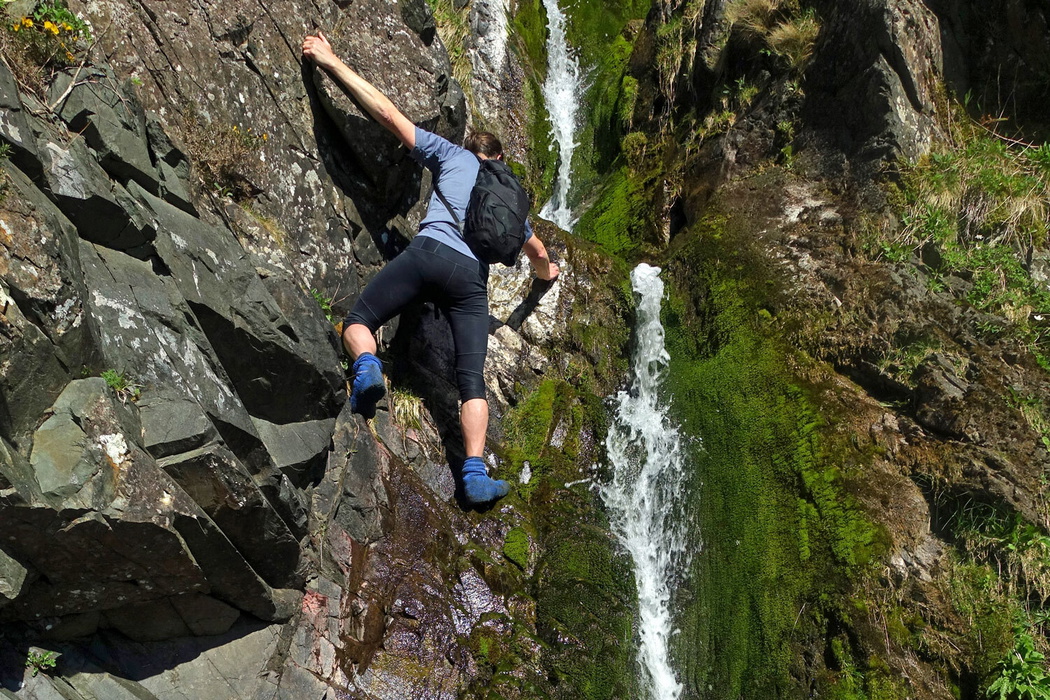
When Lakeland is blighted by a pall of low-lying unmoving cloud which renders crags slippery and hillwalking unattractive, gills can be entertaining and rewarding, provided there is not too much water flowing.
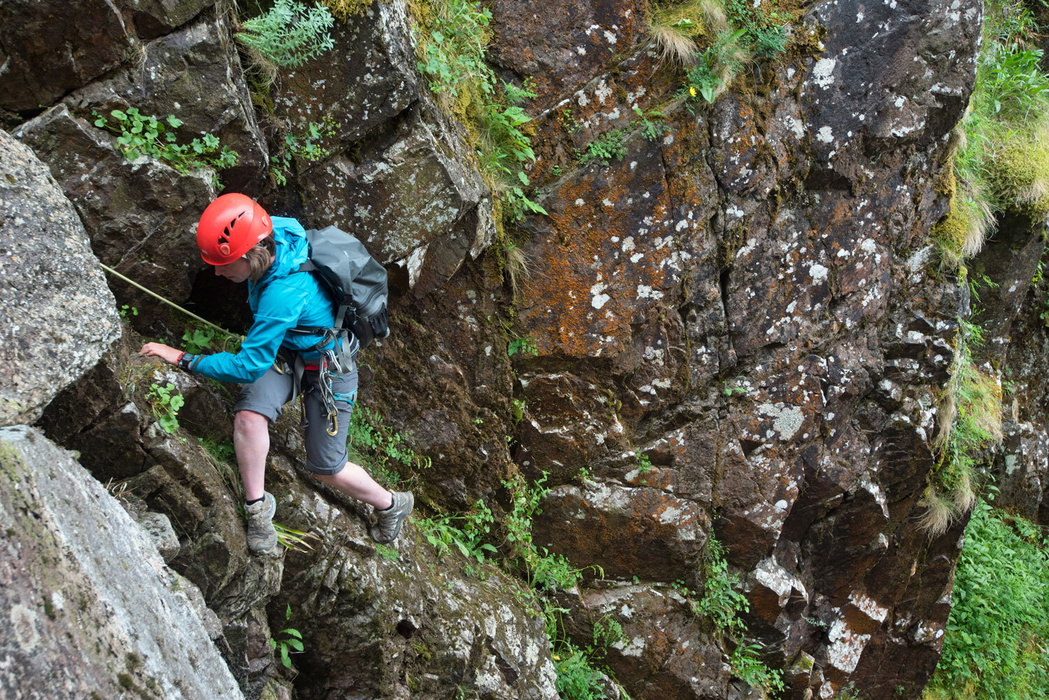
In a prolonged dry spell, go for those special routes which rarely come into perfect condition.
These routes are in gills that normally carry a good deal of water and drain a large area. The small gills are feasible after a few days of dry weather in summer, and indeed, can prove more entertaining with a good flow of water in them.
In my experience, gills of a similar scrambling grade to crag scrambles can feel more difficult, especially if you are not used to them, so exercise caution before you’ve gained the experience necessary to tackle the more difficult gills.
When to go gill scrambling
The best time of year to go gill scrambling is definitely on a hot summer’s day when the cooling water can be a delight. This is especially true of gills necessitating deep pool wading. This is much nicer when its warm! However, gills can be ascended at any time of year as long as you use common sense and choose your gill according to conditions.
Outside the summer season, you need to be mindful of the volume of water in the gill and the practicality of making an ascent, and in winter, ice may be a hazard. If there’s snow, its winter climbing, not gill scrambling!

Equipment
Footwear is probably the most important item. I have a personal preference for fell running or approach shoes since these are comfortable, grip well on the rock and shed water as fast as they get wet, which will be almost immediately! However, many prefer more rigid boots. The best have some lateral rigidity in the sole.
Thick woollen socks worn over shoes or boots are pretty essential for certain gill scrambles, particularly those where algae covers the rocks making them as adhesive as Teflon. I tend to take them on all gill scrambles, since the extra grip provided makes them more enjoyable.

A change of clothes may be a good idea to keep the day enjoyable after a dowsing in a wet gill. On a warm summer’s day, shorts and a tee shirt maybe enough if you can dry off. Otherwise, full waterproofs with a decent hood are pretty essential in the wetter gills.
Some gills are like standing in a power shower, so a rucksack cover and waterproof liners are a very good idea. Loose rock often abounds in gills, so take a helmet. In some gills there may be a danger of sheep knocking stones onto your head.
The vast majority of gills don’t involve long rock pitches so a short rope is to be preferred as it is easier to handle (and carry when it gets wet). A 30m half-rope is best, or in some instances, a hillwalkers’ safety rope may suffice to give the second confidence.
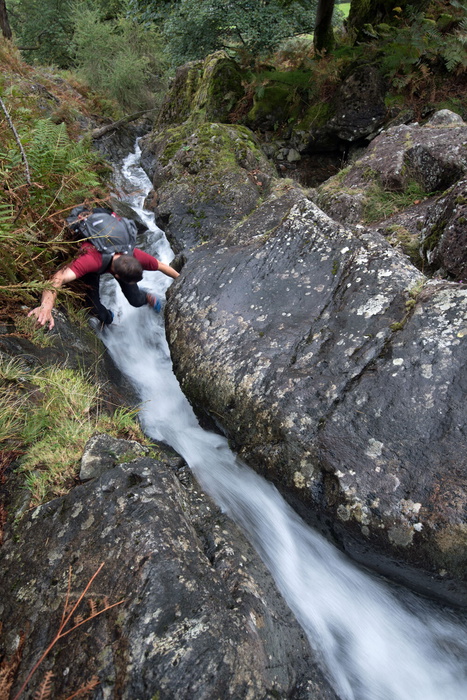
Dangers and how to avoid them
Gill scrambling is nothing like rock climbing on pristine rock. Although technical difficulties may be low, protection may be poor and the rock slimy and loose. Move stealthily like a cat, careful to avoid dislodging loose rock on to unsuspecting companions.
Treat each hold with suspicion and test the rock if pulling on holds. Make allowances for the slippery nature of the rock and the power of water. Consider the consequences of a slip and whether it will result in an early bath or something more serious. There are often ways round difficulties involving thrashing through undergrowth, but although this may prove less satisfying than a direct ascent, it may be advisable.
Treading lightly
Gills occupy a very small area and with the precariousness of the plants clinging to the walls they are very fragile and are easily damaged by those climbing up the gill side. Scrambling has caused formerly obscure places to suddenly become immensely popular and this can lead to irreversible damage.
Carelessness is the main cause of the problems; apart from the damage arising from the trail of open gates, litter and broken walls, people can also harm the soft vegetation on the gill walls. The mountain gills are especially vulnerable because they have developed so far without disturbance.
The last ice age left Lakeland some 10,000 years ago and in its wake waves of plants colonised the bare debris left by the retreating ice, eventually leading to rich and complex vegetation.
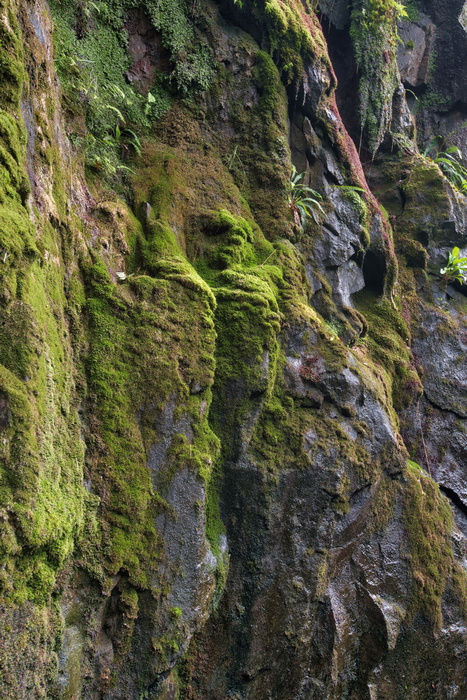
When scrambling up the walls of the gills place your feet and hands carefully, avoiding damaging vegetation or even pulling off branches of trees. This may destroy vegetation that may never regrow in our lifetime.
Ensure that you keep to the rocky bed of the gill, following established routes and avoiding crumbling rocks where many of the delicate species lie!
Concern has been expressed by conservationists and botanists that gill scrambling leads to the destruction of a sensitive habitat for rare plants and birds. The conflict of interest between the adventure-seeking scrambler and the conservationists is not an easy one to resolve.
Please be aware of the problem and leave no sign of your passage. If you stick to the clean water-washed rock then no damage is inflicted on the vegetation. Once you have recourse to the side walls you could damage the vegetation.
Some of the gills are in protected Site of Special Scientific Interest (SSSIs) and should be traversed with the utmost care. Those routes that are in such areas are identified in the guide as being SSSIs or as areas of nature conservation interest.
Please don’t pollute the stream – it may be someone's water supply – and before taking a drink yourself, remember that ravines are often the last resting place of suicidal sheep!
In conclusion, don’t let the lack of solid, dry rock put you off. For devotees like myself, gill scrambling is at least the equal of more conventional crag scrambling. It is a portal into a different landscape of rushing water, varied mosses and impressive ravines – a lost world to be explored and experienced.



